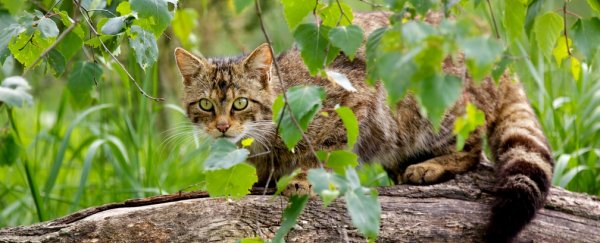New research has found that the most cost-effective way to help save 148 endangered plant and animal species in Australia's famous Lake Eyre Basin is to control the numbers of feral pigs in the area.
Talking about species control is always controversial, but a three-year study led by the Queensland University of Technology (QUT) has shown that the strategy could help us protect native plants and animals, as well as save money, as climate change intensifies. Not only that, the researchers also suggest that the strategy would increase food production in the area by 10 percent.
The Lake Eyre Basin might sound like a pretty specific region, but it covers almost one-sixth of the entire Australian continent. Stretching across the borders of New South Wales, Queensland, the Northern Territory, and South Australia, it's the world's largest internally draining lake system, and it has a huge impact on Australia's agriculture industry and river health. Needless to say, it's pretty important to maintain the ecosystem's health.
"The Lake Eyre Basin is crucial to Australia's biodiversity - at least 65 animal species and 13 plant species are found in its iconic and threatened Mound Spring ecosystems, and other threatened species such as the Greater Bilby, Yellow-Footed Rock Wallaby also live there," lead researcher and ecologist Jennifer Firn said in a press release.
Her team looked into which of the 11 feral animal and 12 invasive plant species in the region would be the most beneficial to control in order to protect native species. And when it comes to the most cost-effective strategy, culling feral pigs has the biggest impact, the research found.
"The most cost-effective measure we could take is the control of feral pigs at a cost of $2 million per annum in targeted locations across the Basin, as they have a negative impact on both native plants and animals," she said. "Managing the populations of other feral predators such as cats, dogs, and foxes follows as the best strategy for threatened mammals."
The researchers also looked at how their strategies would work under climate change conditions predicted over the next 50 years, and found that controlling feral plants and animals will become increasingly important over the coming decades.
"Time is of the essence as we found that 29 of the 148 species are at risk of becoming extinct in the Lake Eyre Basin within 50 years if invasive plants and animals are not controlled," said Firn.
The study also rated the benefits of their 23 different strategies based on effectiveness per dollar spent, and found that the financial benefits would be significant. "It's been estimated feral animals and plants cost the Australian economy more than $5 billion in lost agricultural productivity each year, quite apart from the loss of our rare and unique species," said Firn.
"If we implemented our recommended strategies for the feral predators (cats, dogs and foxes) and the goats and rabbits, experts who participated in the study estimated that we could increase agricultural production by 10 percent or more," she added.
The research has been published in Global Change Biology, and Firn's team believes that the findings will be applicable for the whole of Australia. But given the importance of the region, the Lake Eyre Basin is undoubtedly a pretty important place to start. Now that we know how much of a different controlling feral populations could have, the next challenge will be to find a humane and effective way to control them.
Love the environment? Find out more about ways you can help protect it by studying at QUT.
